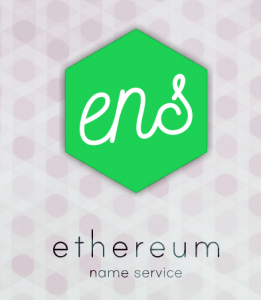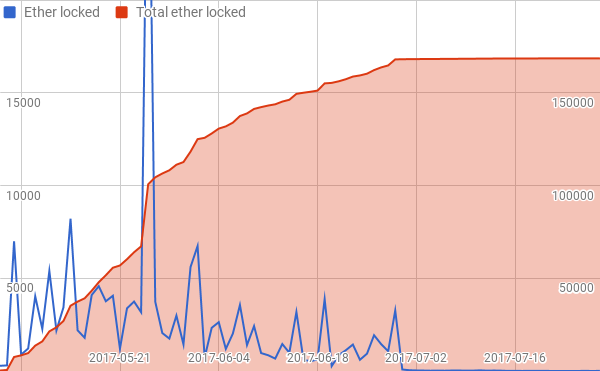
Last month I had the good fortune to be invited to the first Ethereum Name Service (ENS) Workshop in London, UK. Ever since I became first exposed to crypto-currencies with Bitcoin, I have been enthusiastic about the possibilities of using blockchain technology to underpin DNS. To be clear, I don’t envision blockchain ever replacing DNS, I see it as putting DNS on steroids. Most attractive to me is the possibility of using blockchain to eliminate DNS as a DDoS attack vector.
ENS and the .ETH Top Level Domain
On Day 2 of the workshop I gave a short talk about my thoughts on DNS-over-ENS and the unique opportunity the Ethereum has with their .ETH namespace. The .ETH TLD Registry is a smart contract on the Ethereum blockchain which soft launched earlier this year garnering 180,822 domain names, which means that if .ETH was one of the new gTLDs it would have been the 21st largest new TLD in operation.

While there was talk about what would have to happen for .ETH to get serious consideration when the next ICANN expansion round starts (2021? ish?) , what I find interesting about it is that .ETH doesn’t actually need to be in the legacy DNS root to be globally visible. This is because everybody connecting to the Ethereum network already has the Ethereum Virtual Machine (EVM) built-in to their applications, and thus they already have visibility into the .ETH namespace. (By adding resolver contracts to the ethereum blockchain it is even possible to make .ETH or additional namespaces globally visible over legacy DNS to anything connected to the ethereum network).
(DNS + ENS) * VRM = !!!!!!!
In my mind a third component fits in this concept nicely, one which I’ve touched on briefly here before: Vendor Relations Management or VRM.
Introduced in the Doc Searls book The Intention Economy in 2012, I’ve always thought that DNS lent itself for being a natural transport layer for VRM. Now with the advent of blockchain, more specifically Ethereum, we have the delivery mechanism to build decentralized ecosystems where each node (that’s you and me or our agents) is in control of its own data and derives its own benefits from the sharing or transmission of that data (contrast with the prevailing model today, where we are all being datamined, surveilled and harvested by external behemoths running their own proprietary walled gulags).
Below is the video of that talk and the powerpoint deck is here.
On Governance
Lately, domains have entered center stage in the culture wars. First there was fake news which quickly became the Fifth Horseman of the Internet Apocalypse, now domain registrars are under the gun to “do something” about perceived abuses for domains merely registered through them. (Yes, even we got sucked in a bit when we respectfully declined to allow DailyStormer to use our system).
In England on the first day, here are a bunch of eminent, cutting edge crypto-currency pioneers (and one legacy DNS dinosaur) sitting around the table discussing how to create an honest-to-god, decentralized, distributed domain registry – something that everybody howls for in alternating beats whenever somebody gets taken down (first from the right, then from the left, then right, left, right, left…) for “sticking it to ICANN and creating a decentralized DNS” and what is one of the very first topics that comes up?
“So obviously we have to prevent child porn. What else?”
The discussion was vigorous and touched on a lot of different points, but the takeaway is this: even a Truly Decentralized DNS system is going to have a governance structure. You can build in all kinds of ways to make it censorship resistant, takedown resistant but at the end of day the fact remains this: sometimes for whatever reason, perhaps something we can’t even imagine today, there needs to be a mechanism for when a domain has to come down.
That’s reality. And yes, there will be abuse and mission creep and cost will be eternal vigilance and constant regrounding to core principles. Ethereum people have a visceral understanding of this after the disaster known as “The DAO Hack”, where Ethereum attempted to create a Decentralized Autonomous Organization, which was then hacked. The colloquialism I picked up in London amongst the etherheads (just made that up) was that there was always the need for “the handbrake” – a big lever that “stops the train” when things go terribly wrong.
Out of the discussion a couple points emerged:
- Hard forking the blockchain every time you needed to take down a domain was not practical.
- Whatever enforcement strucrture took shape would probably happen at a “second layer” sitting atop the actual Registrar contract. The idea being that it would be voluntary and implemented via filtering. (I have concerns about that model which I can elaborate on in another post).
Key point being: Yes there will be decentralized DNS, and perhaps even an entire naming ecosystem outside the legacy IANA/ICANN root will form. But there will be Governance, of one form or another. There always is.
Also See:
- Nick Johnson’s Results of the First ENS Workshop summary
- The ENS Homepage


Leave a Reply